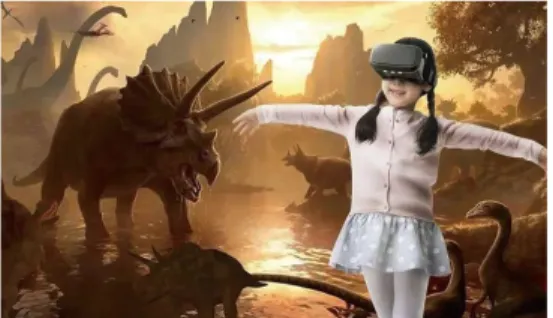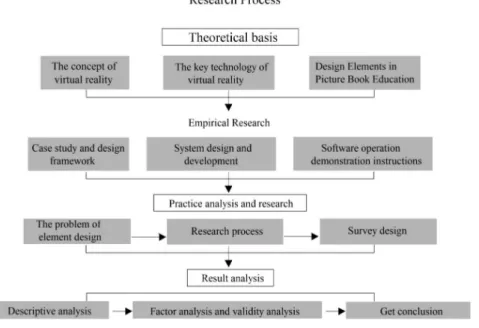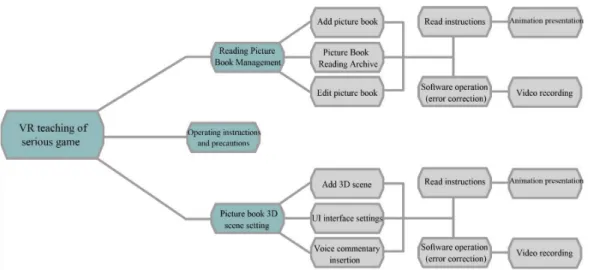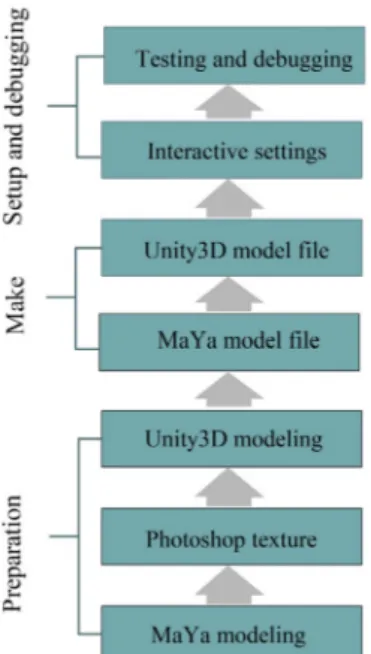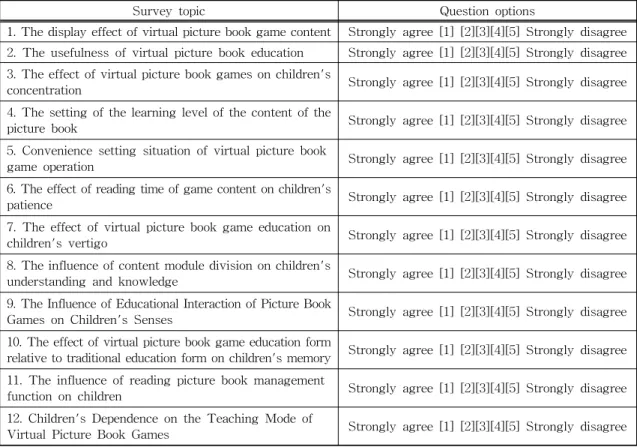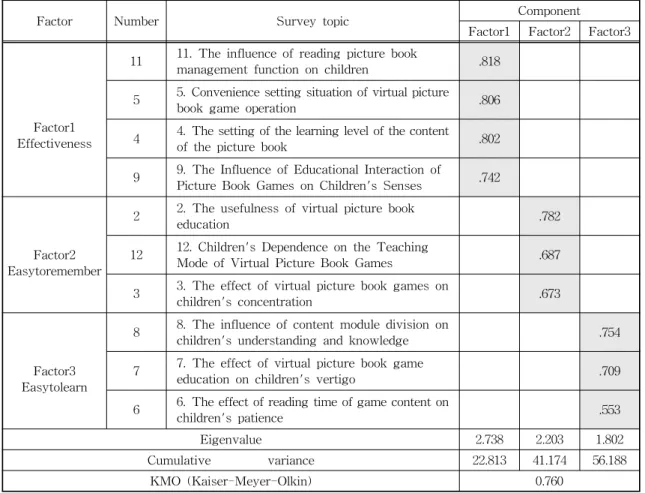Analysis of the Design Elements for the Children's Picture Books Based on VR
Kai Lu
†, Dong Min Cho
††ABSTRACT
The research of combining virtual reality technology with the design elements of children's picture book education is a relatively new topic in virtual reality technology in recent years. Based on the combination of picture book design elements with virtual reality technology and the development of a children's picture book teaching game, this article analyzes the effectiveness of the application of virtual reality technology in children's teaching, and explores the usability of picture book design elements in teaching [1]. Through literature research methods, practical research methods and investigation research methods, this paper lucubrates the application of virtual reality technology in the design elements of children's picture book education so as to provide adequate theoretical and practical support for the research theme. The spatial positioning, vision, sound, and functional requirements of children's picture book games play a leading role in teaching. Practical statistics have proved that it is easier to promote children's mastery of teaching knowledge in a virtual environment. Moreover, use VR's game management function and setting function to solve the boringness of traditional education methods and the limitations of the teaching environment. The feasibility of game operation provides a virtual teaching platform system for children's education, and the teaching effect is remarkable.
Key words: Virtual reality, Children's picture book, Education, Interaction, Design elements
※ Corresponding Author : Dong-Min Cho, Address:
(54896) 567, Baekje-daero, Deokjin-gu, Jeonju-si, Jeolla- buk-do, Korea, TEL : FAX : +82-63- 270-3755, E-mail : mellgipson@daum.net
Receipt date : Apr. 29, 2021, Revision date : Jun. 21, 2021
Approval date : Jul. 21, 2021
††
Dept. of Design & Manufacturing Engineering, Jeonbuk National University
(E-mail : larry1870@163.com)
††
